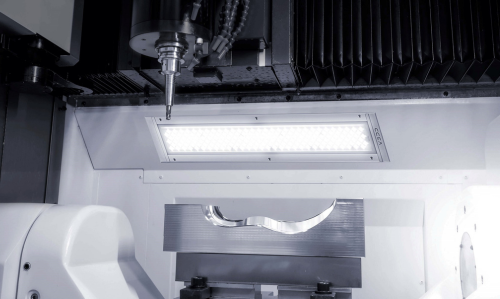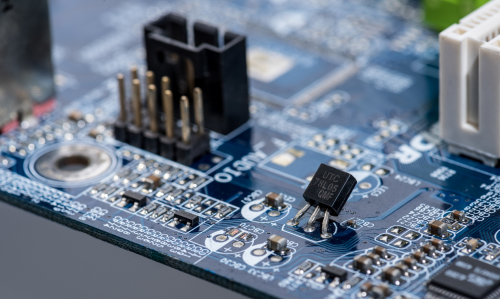Зоната за дейности „Гора Калвария“ управлява фондация „Спортно образование“, чиято цел е да помага на децата и младите хора да развиват своите спортни и научни страсти, като подкрепя образователни, културни и социални дейности за развитието на техните спортни и научни страсти.
Трябва да сте влезли в
Latest posts
-
Диаманти на Форбс 2024 за DACPOL!Read more
С удоволствие съобщаваме, че DACPOL Sp. z o.o. отново е включена в списъка на най-динамично развиващите се компании в Полша, този път в категорията на средните компании с приходи от продажби над 250 милиона злоти.
-
DACPOL в класацията „Бизнес Газели“ за 2024 г.!Read more
За нас е чест да обявим, че DACPOL Sp. z o.o. за пореден път е призната за победител в престижната класация „Бизнес Газели“.Това отличие се присъжда на компании, които благодарение на изключително динамичното си развитие се представят много добре на пазара.Ние не забавяме темпото и продължаваме да работим динамично!
-
Подкрепихме кампанията „Благороден парцел“!Read more
Тази година участвахме в 23-то издание на инициативата „Благороден пакет“. Много сме щастливи, че успяхме да подкрепим най-нуждаещите се през това трудно време!
-
Подкрепа за жертвите на наводнениятаRead more
Миналата седмица нашият автобус достави дарения до Чеховице-Дзедзице. Вода, храна и други стоки от първа необходимост бяха събрани вътрешно в DACPOL и DACPOL SERVICE. Транспортът беше допълнен от дарения от жителите на община Пясечно, които събрахме от Доброволческата пожарна служба на Пясечно.
-
Мач за благотворителна купаRead more
Имахме голямото удоволствие да участваме като партньор в благотворителния мач #CharityCup. С интерес наблюдавахме как членовете на отбора оставиха сърцата си на терена, всичко това за благородна кауза! Целта беше да се съберат средства за интегративен медицински диагностичен център, който освен превантивни грижи ще предоставя и психологическа подкрепа. #FundacjaJestBilisko (WeAreByFoundation) е отговорна за това начинание.
-
Финал на 21-вото издание на Икономическата награда на президента на Република ПолшаRead more
С удоволствие съобщаваме, че гала вечерта на 21-вото издание на Икономическата награда на президента на Република Полша се проведе в замъка Ланцут. Това престижно събитие има за цел да подкрепи и отличи най-добрите полски предприемачи, които допринасят за развитието на страната ни.
-
Как да изберем правилното индустриално осветление?Read more
Тази статия разглежда ключови аспекти на индустриалното осветление, включително избора на правилните осветителни тела за различни работни условия, използването на LED технология, системи за управление на осветлението и влиянието на стандартите и сертификатите върху качеството на монтажа. Тя представя и предизвикателствата на осветлението при екстремни температури, както и спецификите на осветлението в различни индустрии, като хранително-вкусовата, химическата и фармацевтичната. Научете как...
-
Ново качество в оптимизацията на фотоволтаични системи с GaN технологияRead more
Efficient Power Conversion Corporation (EPC), лидер в технологията за транзистори от галиев нитрид (GaN), представи своя иновативен референтен дизайн, EPC9178. Този революционен продукт предефинира стандарта за оптимизация на фотоволтаични системи, предлагайки изключителна енергийна ефективност, надеждност и намалени разходи за внедряване.
-
Анаеробни лепила и техните приложенияRead more
В тази статия се разглеждат развитието и бъдещето на анаеробните лепила, които играят ключова роля в индустриите, осигурявайки надеждност и дълготрайност на резбовите съединения. Обсъждат се различни аспекти на тяхното приложение в индустриите като автомобилостроене, авиация, химическа и железопътна индустрия. Освен това статията анализира нарастващото търсене на иновации, които отговарят на нуждите на индустрията от повишена здравина и устойчивост на анаеробни лепила.
-
Топ 5 приложения на анаеробните лепила в индустриятаRead more
Научете за пет приложения на анаеробните лепила в индустрията и техните предимства при фиксиране и уплътняване на компоненти. Как се използват в автомобилната, енергийната, медицинската, химическата и машиностроителната промишленост, гарантирайки надеждност, дълготрайност и устойчивост на екстремни условия.
-
Как да изберем средства за закрепване на резби?Read more
Тази статия обсъжда как да изберете правилните осигурители за резби, включително анаеробни лепила, пружинни шайби и ленти. Ръководството обхваща фактори за избор, практически съвети за приложение и други.
-
Какво са анаеробни лепила?Read more
Какво представляват анаеробните лепила, как работят и какви ползи носят за индустрията? Фокусираме се върху приложенията им в тежки условия, като високи температури, вибрации и налягане. Ще научите също как анаеробните лепила допринасят за издръжливостта на резбовите съединения и техните приложения в различни индустрии, като автомобилната, хранително-вкусовата и фармацевтичната.
-
Защо е важно заключването на резбата?Read more
Заключването на резбата е важен елемент за осигуряване на издръжливостта на връзките. В тази статия дефинираме резбите, обсъждаме проблемите, възникващи при неправилно заключване на резбата, и подчертаваме предимствата на използването на специализирани продукти, като анаеробни лепила и уплътнители за резби. Ще намерите практични съвети за избор на правилните продукти за различни приложения и предизвикателни условия, както и примери от автомобилната, авиационната и енергийната индустрия....
-
Векторен анализ на електрически вериги: ключът към прецизното проектиране и диагностика на електроникатаRead more
Векторният анализ на вериги е усъвършенстван метод, използван в електрониката за оценка на електрически вериги, особено на тези, включващи променливотокови сигнали. Чрез представяне на сигналите и импедансите като вектори в комплексната равнина, той позволява прецизна визуализация и анализ на тяхното честотно-зависимо поведение.
-
Причини, поради които всяка фотографска компания трябва да инвестира в куфар NANUKRead more
Разберете защо калъфите NANUK са идеалното решение за професионални фотографи. Те предлагат издръжливост, водоустойчивост, удобно транспортиране и защита от екстремни условия. Инвестирайте в оборудване, което ще предпази вашите фотографски аксесоари.
-
Част втора: Примери за използване на куфарите Nanuk в различни индустрииRead more
Открийте как куфарите Nanuk се представят в технологичната, музикалната, туристическата и научната индустрия. Научете кои модели предлагат най-добрата защита за вашата екипировка в тежки условия и кои аксесоари си струва да добавите, за да подобрите тяхната функционалност. Практични съвети и приложения в различни области!
-
Примери за употреба на куфари Nanuk в различни индустрииRead more
Открийте приложенията на куфарите Nanuk в различни индустрии – от фотография и информационни технологии до медицина и пътувания. Научете как да изберете най-добрия модел за защита на оборудването си в тежки условия и кои аксесоари ще подобрят неговата функционалност. Практическо ръководство и отговори на често задавани въпроси!





















